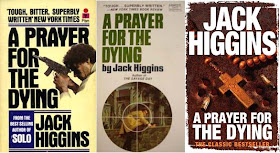 |
The Stark story is titled, “Birth of a Monster”. It is the story of a doctor who receives a
late night call from a man whose wife is in labor and, even though the
soon-to-be mother isn’t a patient, the doctor agrees to rush to the couple’s
home and deliver the baby. When the
doctor arrives he discovers something a little unusual.
“Birth of a Monster” is a decent little pulp story. It runs only about six double column digest size pages, and it is straight up horror, 1950’s style (i. e. heavily influenced by The Twilight Zone without the social commentary). While it is a relatively pedestrian story, Mr Westlake played with the tropes a bit (to tell how would ruin the tale and I shall remain mum). The language is a tad stilted and very sharp, which doesn’t devalue the story, but rather adds to the unease it generates with the reader—
“Birth of a Monster” is a decent little pulp story. It runs only about six double column digest size pages, and it is straight up horror, 1950’s style (i. e. heavily influenced by The Twilight Zone without the social commentary). While it is a relatively pedestrian story, Mr Westlake played with the tropes a bit (to tell how would ruin the tale and I shall remain mum). The language is a tad stilted and very sharp, which doesn’t devalue the story, but rather adds to the unease it generates with the reader—
“He hung up, hurried
back to the bedroom and dressed. He knew
the estate, at the end of Larchmont Road. Empty for years.”
“Birth of a Monster” reminded me a little of an
early Richard Matheson story, although not quite as vibrant and polished—it
appears to be straight forward, but a little twist at the climax reveals the
true complexion of the story. And while
it is not as mature and solid as Mr Westlake’s later work (he was only 26 when
it was published) it is a story that will bring a smile.
This review originally appeared on the now
defunct blog Dark City Underground July 6, 2010 in significantly
different form. I will be moving a few
other reviews from DCU to Gravetapping over the next several
weeks. I will also be posting some ori






































